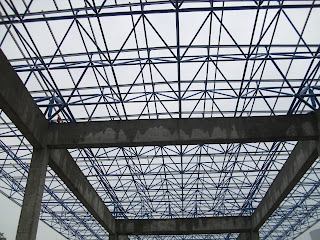Large span space frame building
Large span space frame buildings are a popular building design for structures that require open and flexible interior spaces, with minimal obstructions and maximum design possibilities. They are known for their unique structural form, which relies on a series of interconnected tubular steel or aluminum members to create a lightweight shell that spans large areas without requiring the need for internal supports.
The concept of space frame construction was developed in the early 1900s by Alexander Graham Bell, who used the principle of tetrahedral geometry to create a lightweight and flexible design for constructing kite-like planes. Since then, space frame structures have been used for a wide range of applications, including automotive manufacturing plants, sports arenas, and airport terminals.
One of the primary advantages of large span space frame buildings is the flexibility they offer in terms of design. The structural system can be adapted to meet various architectural configurations, allowing for almost infinite possibilities in terms of interior and exterior design. For example, space frame constructions can be used to create dramatic curved roofs, double-curved domes, and other complex geometries that would be impossible to achieve with traditional building techniques.
Another benefit of large span space frame buildings is their durability and strength. The structural form of these buildings, which utilizes the inherent strength and rigidity of the triangle, makes them able to withstand strong winds, earthquakes, and other natural forces. And because they are made from lightweight materials such as steel or aluminum, they are less prone to damage from environmental factors such as corrosion or erosion.
However, there are also some challenges associated with the construction of large span space frame buildings. One of the most significant is the need to create a stable foundation that can support the weight of the structure. This requires careful preparation and engineering of the underlying ground, which may involve excavation, soil stabilization, or other measures to ensure adequate support.
Another challenge is the complexity involved in the assembly of the space frame structure. Due to the precision required in the manufacturing of the individual members, as well as the need for accurate assembly on site, space frame construction requires highly skilled labor and meticulous attention to detail.
Despite these challenges, large span space frame buildings remain a popular choice for many architectural applications, due to their unique form, flexibility, and durability. With new advances in technology and materials development, space frame construction is likely to continue to play an important role in the future of architecture and building design.




评论
发表评论